
General Assembly
Introduction to the DOM
Wilson Espina
Review
What did we do last lesson?
Introduction to the DOM

Learning Objectives
At the end of this class, you will be able to:
- Describe the differences between the DOM and HTML
- Use the browser’s developer tools to navigate and interact with the DOM
- Select and create DOM nodes with vanilla JavaScript
Introduction to the DOM
Agenda
- Introduction to the DOM
- Selecting elements in the DOM
- CSS Selectors
- Creating DOM nodes with vanilla JS
Introduction to the DOM
Exit Ticket Questions
- It would be useful to send install instructions ahead of class so we could get a chunk of it done beforehand and deal with any issues ahead of the class.
Ajax & APIs
Homework Review
Introduction to the DOM
Classroom Resources
- Pull changes from the
wilson-espina/jsd-9-resourcesrepo to your computer: - Open the Terminal
cdto theDocuments/JSD/jsd-9-resourcesdirectory- Type
git pull origin masterand pressreturn - In your editor, open the following folder:
Documents/JSD/jsd-9-resources/08-intro-dom
Ajax & APIs
Document Object Model
Introduction to the DOM
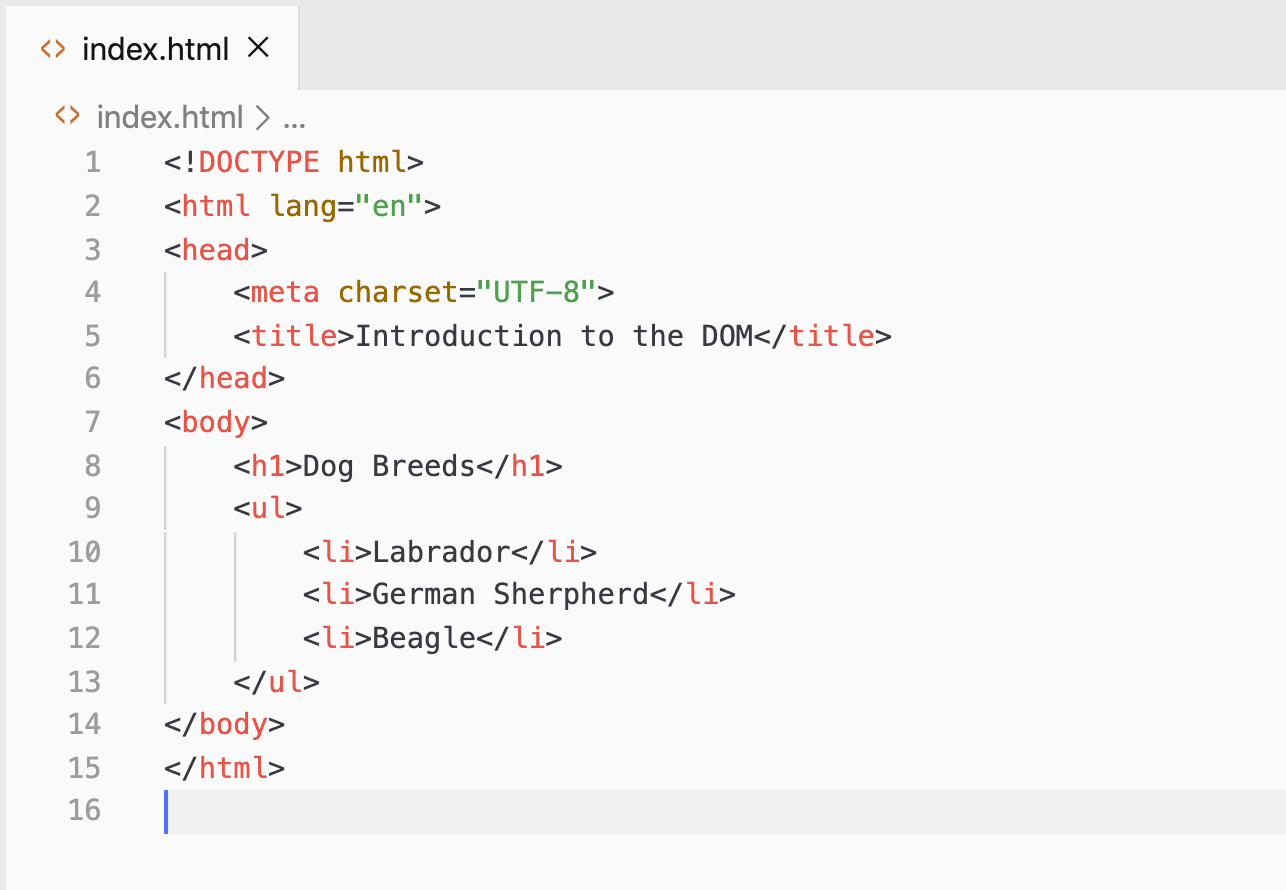
Introduction to the DOM
DOM Tree

- The browser pulls in this HTML document, analyses it, and creates an object model of the page in memory.
- This model is called the Document Object Model (DOM).
- The DOM is structured like a tree.
Introduction to the DOM
DOM Tree
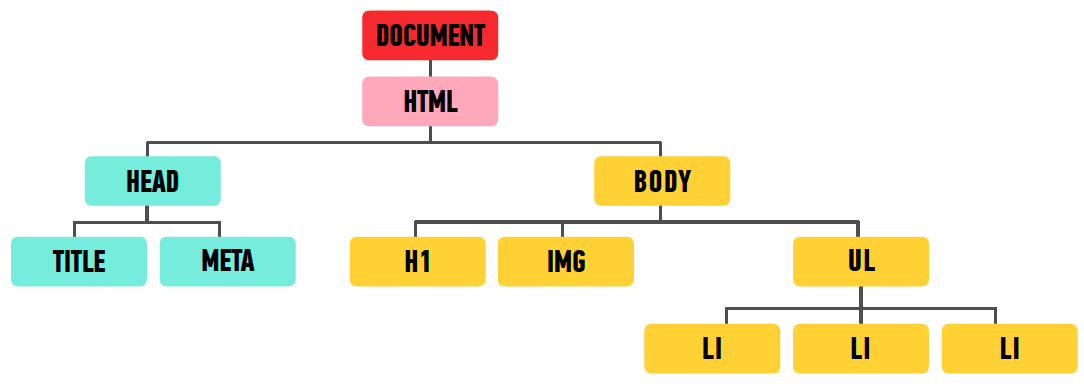
- Each element in the HTML document is represented by a DOM node.
Introduction to the DOM
DOM Nodes

- Nodes can be accessed and changed using JavaScript.
- When the model is updated, those changes are reflected on screen.
Introduction to the DOM
Developer Tools

- In Chrome, you can go to
View > Developer > Developer Toolsand click on the Elements panel to take a look at the DOM tree.
Code along


Introduction to the DOM
HTML and the DOM
Web Page Elements
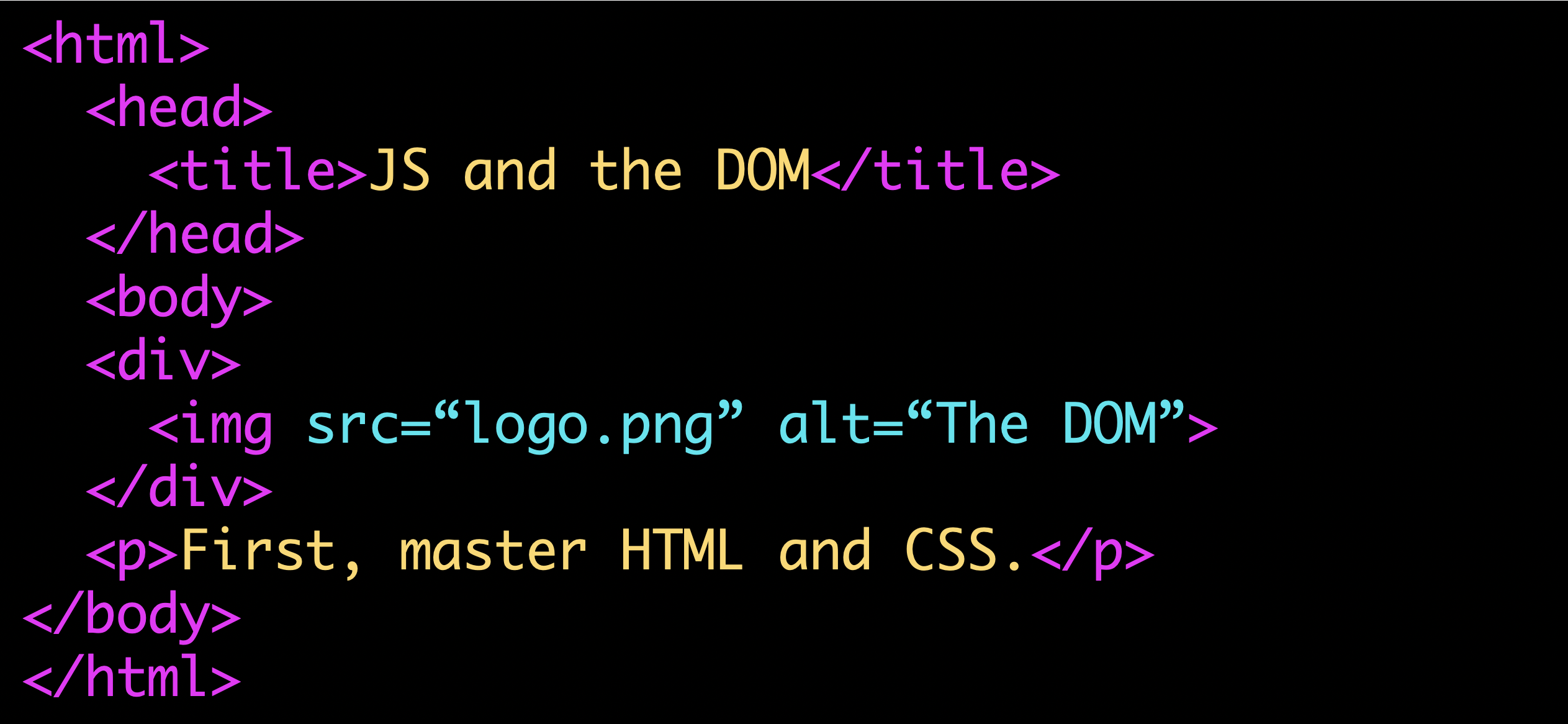
DOM Tree
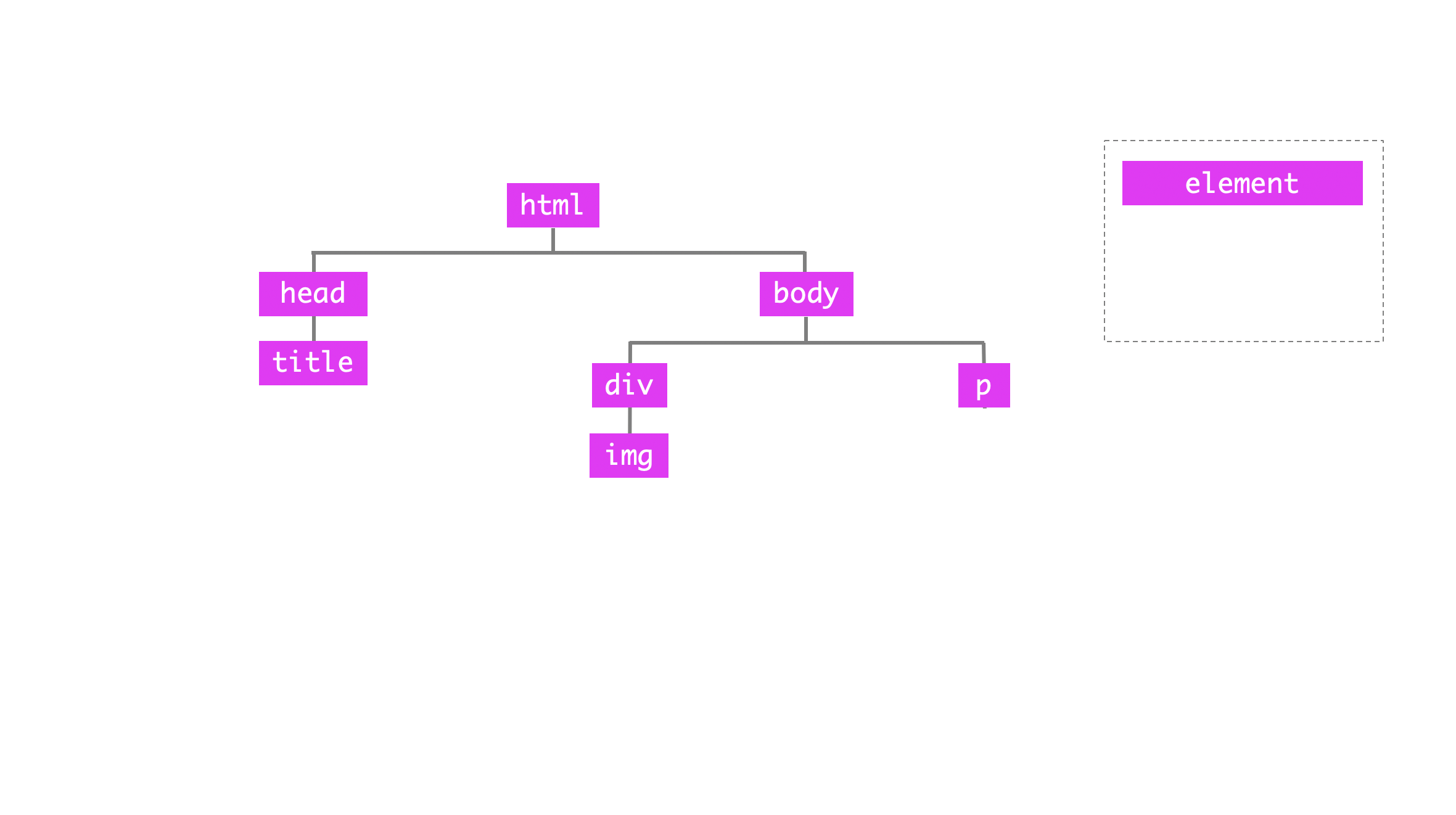
Introduction to the DOM
HTML and the DOM
Web Page Elements

DOM Tree
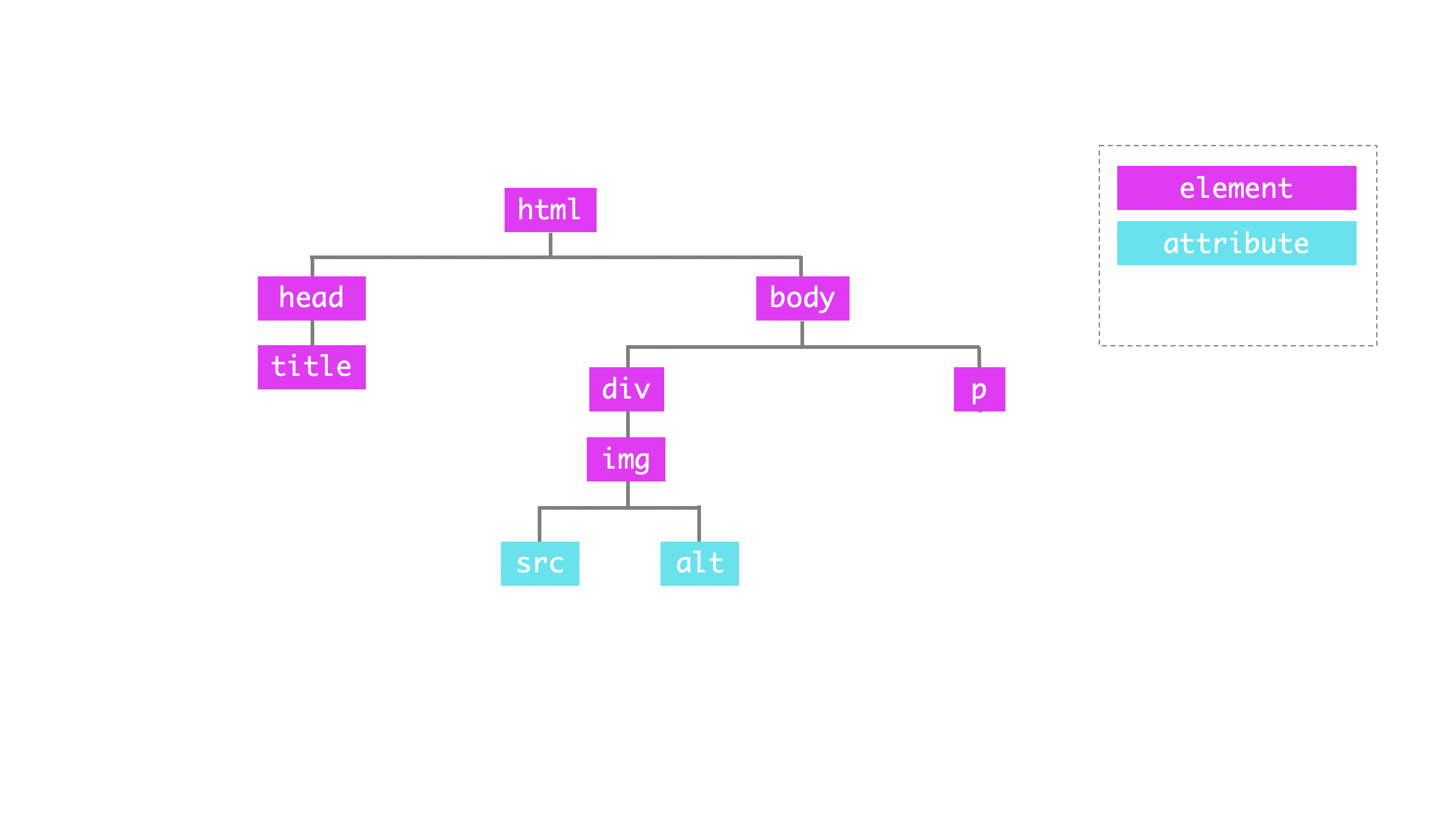
Introduction to the DOM
HTML and the DOM
Web Page Elements

DOM Tree
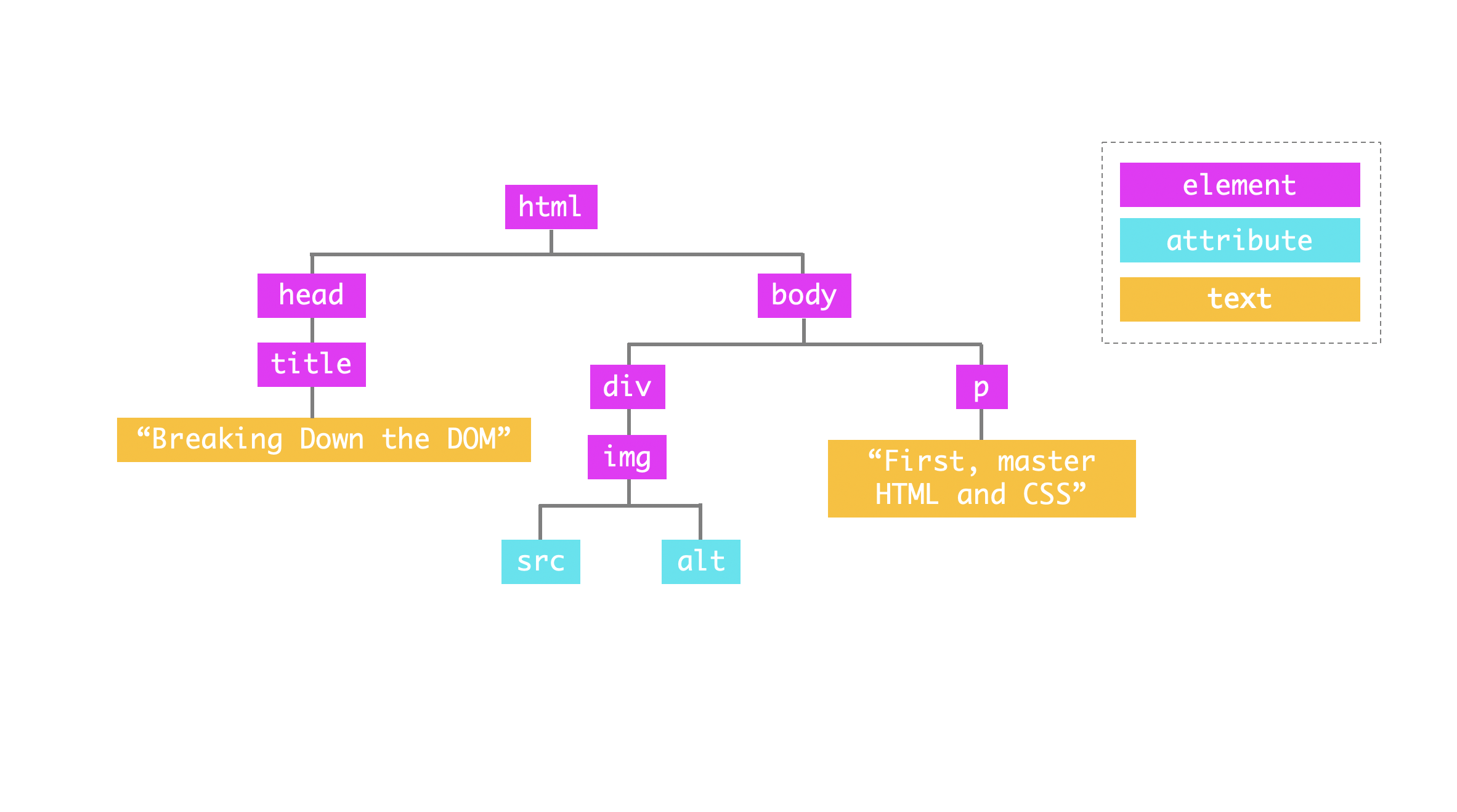
Introduction to the DOM
The Document Object
- The DOM is created by the Browser.
- The DOM provides a representation of the document as a structured group of nodes and objects that have properties and methods.

Discussion - HTML and the DOM

Key Objective
- Identify differences between the DOM and HTML
Type of Exercise
- Pairs
Timing
3 mins |
|
Introduction to the DOM
DOM Manipulation
Introduction to the DOM
Basic Steps


Introduction to the DOM
Selecting Elements in the DOM
getElementById()getElementsByClassName()getElementsByTagName()querySelector()querySelectorAll()
Lets us select DOM elements using CSS selector syntax
Introduction to the DOM
CSS Selectors
Introduction to the DOM
Select All Instances of div elements
'div'
div {
color: red;
}
Introduction to the DOM
Select an element with an ID of main
'#main'
#main {
color: red;
}
Introduction to the DOM
Select all elements with a class of button
'.button'
.button {
color: red;
}
Introduction to the DOM
Select all Paragraph and List Item elements
'p, li'
p, li {
color: red;
}
Introduction to the DOM
Select all anchor links within divs
'div a'
div a {
color: red;
}
Lab - CSS Selectors Refresher

Key Objective
- Use css selectors to isolate DOM elements
Type of Exercise
- Group Activity 2-3 people
Location
- CSS Diner Exercise
- Levels 1 - 10
Timing
10 mins |
|
Introduction to the DOM
querySelector()
- Takes a single argument, a string containing CSS selector.
HTML
<body id="main">
...
</body>
JavaScript
document.querySelector('#main')
Introduction to the DOM
querySelector()
- Selects the first DOM element that matches the specified CSS selector.
HTML
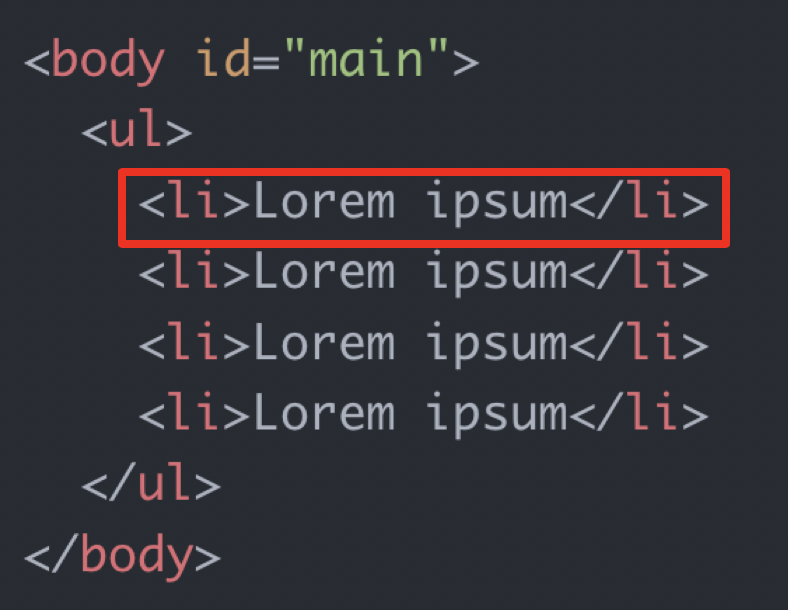
JavaScript
document.querySelector('li')
Introduction to the DOM
querySelectorAll()
- Takes a single argument, a string containing CSS selector.
- Returns a NodeList, which is similar to an array.
HTML
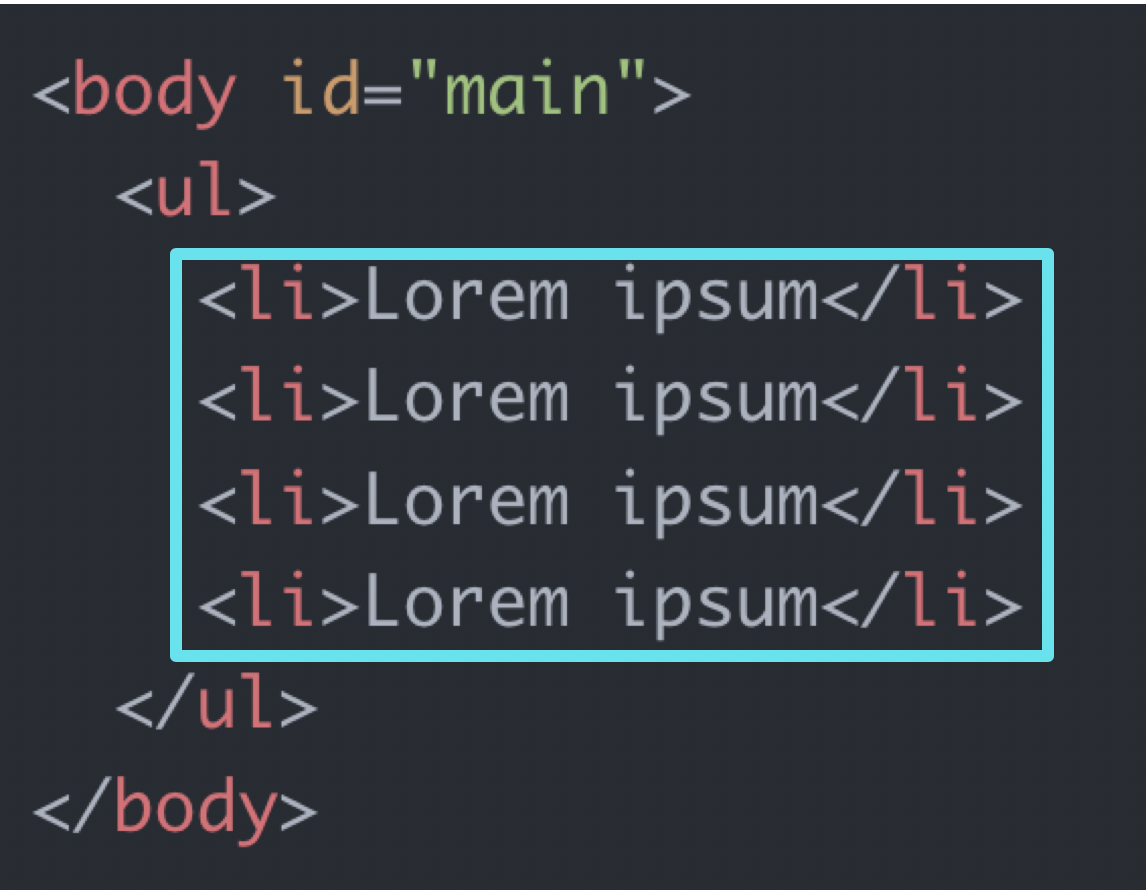
JavaScript
document.querySelectorAll('li')
Introduction to the DOM
Altering DOM Elements
Introduction to the DOM
What can we do with a selected element?
- Get and set the HTML within it with the
innerHTMLproperty - Get and set its attribute values by referencing them directly (
id,srcetc.)
Introduction to the DOM
innerHTML
- Gets the existing content of an element, including any nested HTML tags.
const item = document.querySelector('li')
console.log(item.innerHTML)
// Gets value: 'Lorem ipsum'
Introduction to the DOM
innerHTML
- Sets new content in an element, including nested HTML tags.
const item = document.querySelector('li')
item.innerHTML = 'Toast';
// Sets value: 'Toast'
Introduction to the DOM
className property
- Gets an element's
classattribute value.
const item = document.querySelector('li')
console.log(item.className);
// Gets value: ''
Introduction to the DOM
className property
- Sets an element's
classattribute value. - CSS style sheet would have style rules for intended application of class name.
const item = document.querySelector('li')
item.className = 'selected';
// Sets value: 'selected'
Introduction to the DOM
classList.add method
- Add specific class attribute value(s)
const item = document.querySelector('li')
item.classList.add('selected');
// Adds value: 'selected'
Introduction to the DOM
classList.remove method
- Removes specific class attribute value(s)
const item = document.querySelector('li')
item.classList.remove('selected');
// Removes value: 'selected'
Code along

Open up: 00-dom-codealong

Lab - DOM Exercise

Key Objective
- Use vanilla JavaScript methods and properties to access DOM nodes.
Type of Exercise
- Individual
Location
- starter-code > 01-dom-exercise > app.js
Timing
6 mins |
|
Lab - DOM Attributes Exercise

Key Objective
- Use vanilla JavaScript methods and properties to create and modify DOM nodes.
Type of Exercise
- Individual or Pair
Location
- starter-code > 02-dom-attributes-exercise > app.js
Timing
6 mins |
|
Introduction to the DOM
DOM Creation Methods
Introduction to the DOM
Adding Content to the DOM
- Create a new element with
document.createElement()

Introduction to the DOM
Adding Content to the DOM
- Create a new element with
document.createElement() - Add content to that element with a property such as
textContent,innerHTML, orsrc.
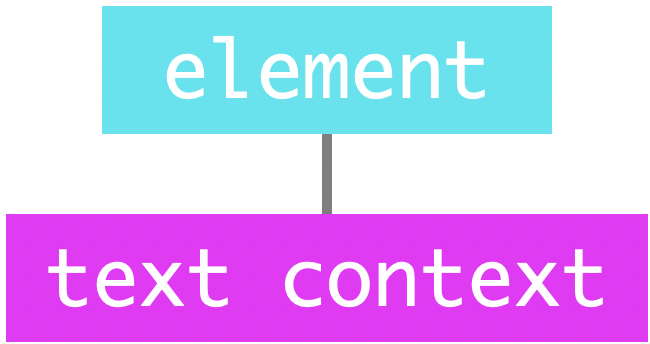
Introduction to the DOM
Adding Content to the DOM
- Create a new element with
document.createElement() - Add content to that element with a property such as
textContent,innerHTML, orsrc. - Attach the new element to the DOM with
appendChild()
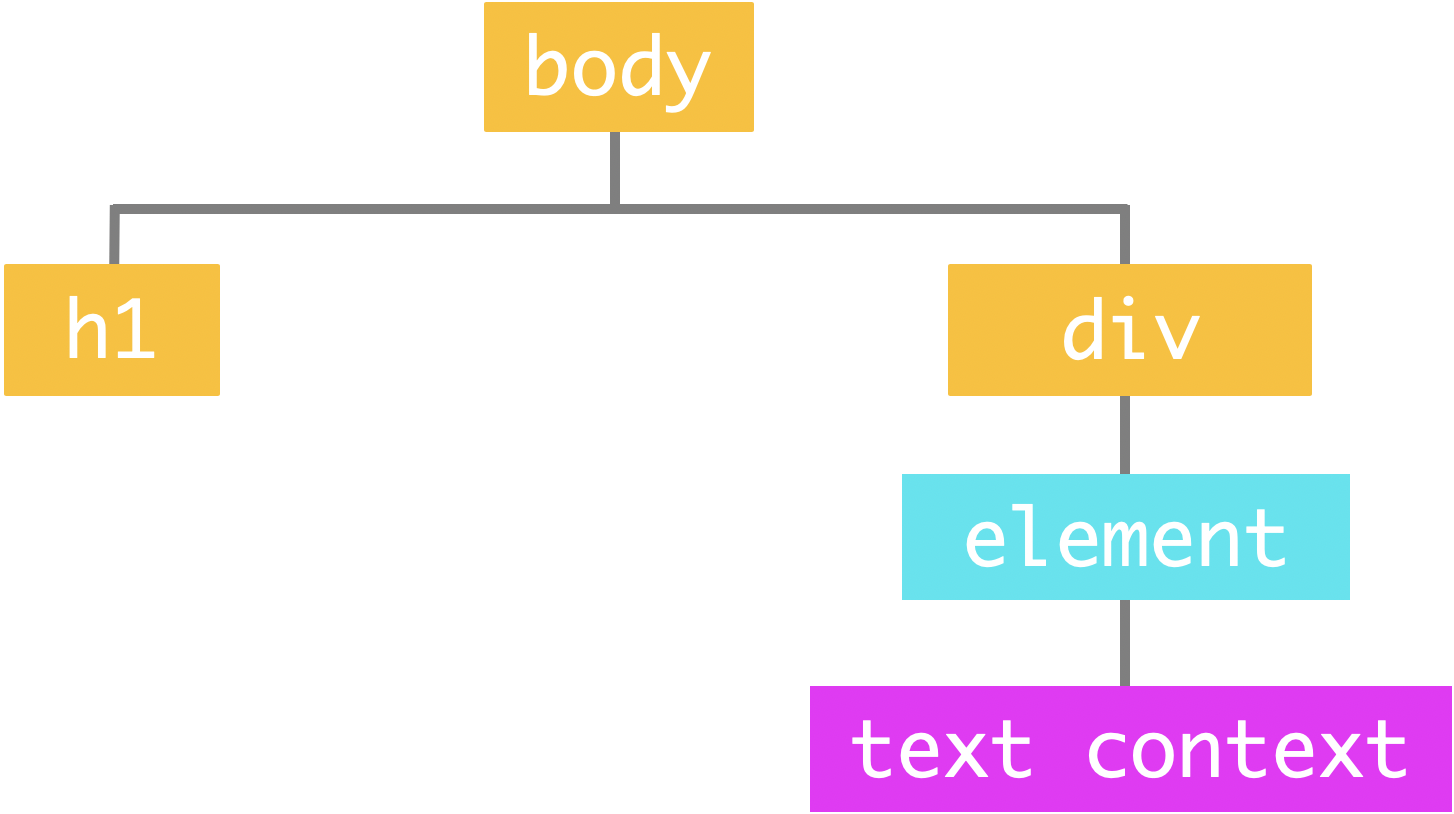
Introduction to the DOM
createElement()
- Creates new element in memory (it's not attached to the DOM).
- Assign it to a variable so you can reference it later.
const item1 = document.createElemement('li');
const item2 = document.createElemement('li');
Introduction to the DOM
innerHTML
- Specifies text content of an element.
- May include nested HTML tags.
item1.innerHTML = '<strong>Tea</strong>'
item2.innerHTML = '<em>Coffee</em>'
item3.innerHTML = 'Just normal text'
Introduction to the DOM
appendChild()
- Attaches element or node as child of a selected element in the DOM.
- Syntax:
parent.appendChild(child)
const list = document.querySelector('ul'); // selects ul element
list.appendChild(item1); // adds item1 li to list ul
list.appendChild(item2); // adds item2 li to list ul
Code along

Open up: 03-create-append-codealong

Lab - Add content with JavaScript

Type of Exercise
- Individual
Location
- starter-code > 04-create-append-exercise
Timing
Until 20:45 |
|
Introduction to the DOM

Learning Objectives - Review
- Describe the differences between the DOM and HTML
- Use the browser’s developer tools to navigate and interact with the DOM
- Select and create DOM nodes with vanilla JavaScript
Introduction to the DOM
Look Ahead to Next Lesson
- Create DOM event handlers using vanilla JavaScript.
- Select DOM elements and properties using jQuery.
- Manipulate the DOM by using jQuery selectors and functions.
- Use event delegation to manage dynamic content.
- Use implicit iteration to update elements of a jQuery selection.
Introduction to the DOM
Q&A
Introduction to the DOM
Exit Ticket
(Lesson #08)